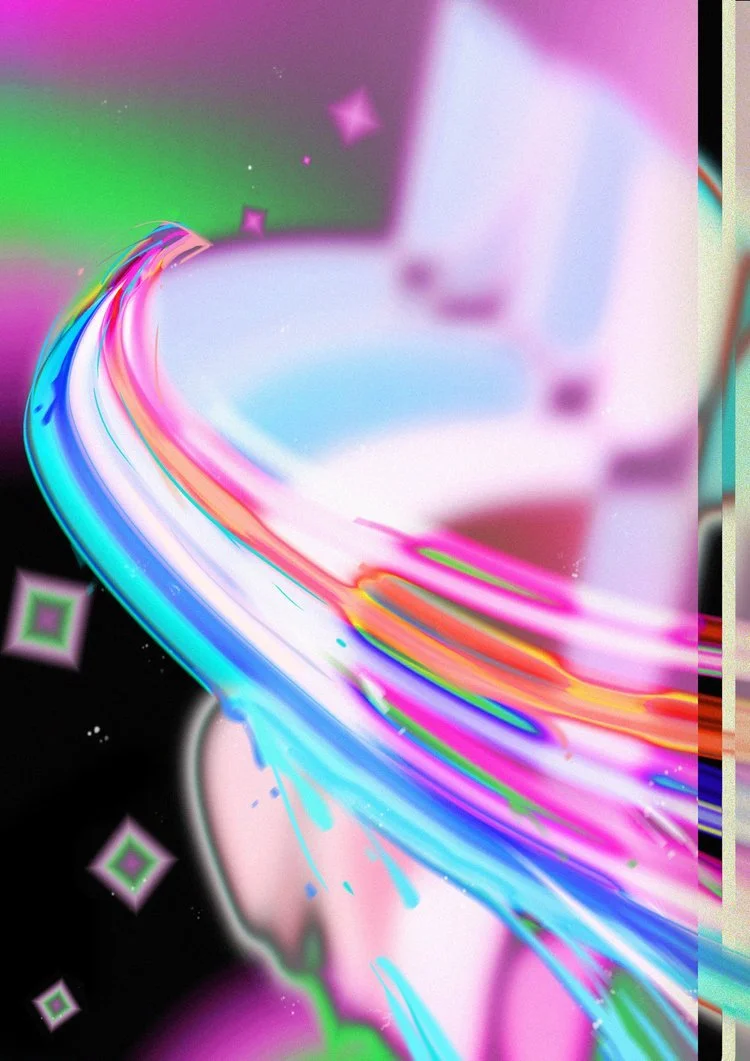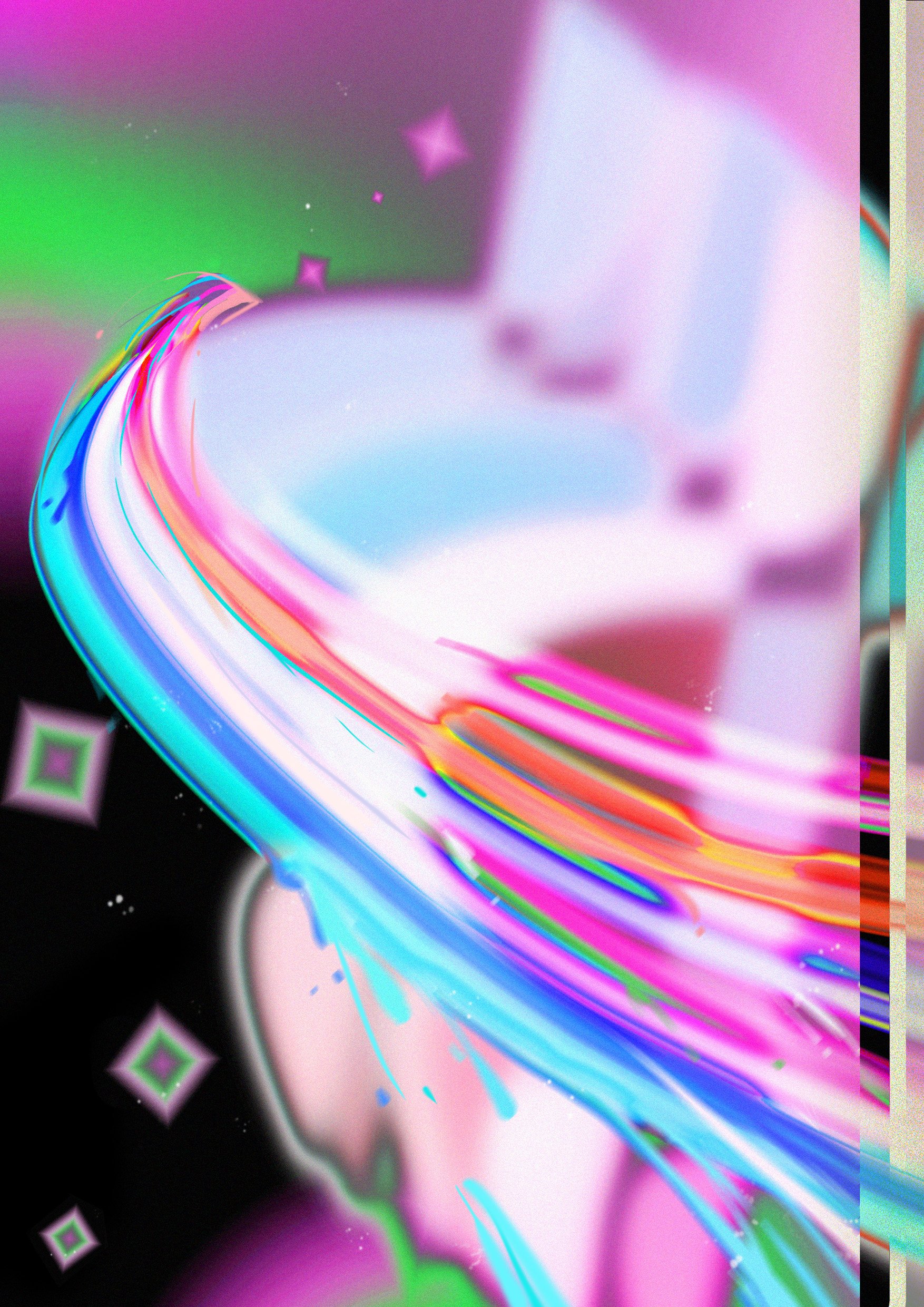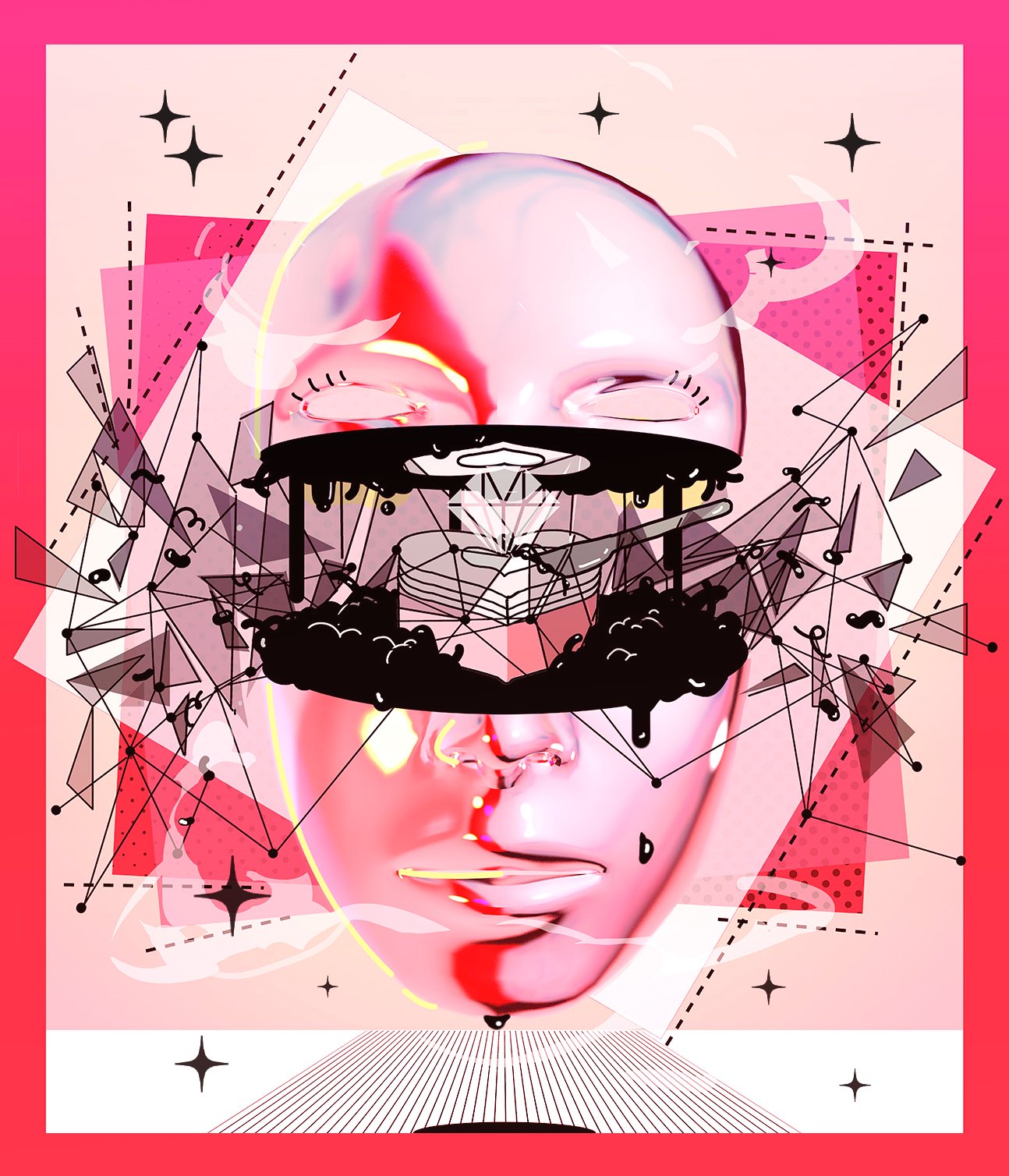10 Questions with Rena Kubota
Rena Kubota is a freelance illustrator, graphic designer, and motion graphic designer, and also an art director for the NFT collection. Last year, she graduated as a communication design student at Pratt Institute. She has completed an Associate degree in art at Seattle central college as well. During her years of education at Seattle central college, she assisted her professors in teaching students in drawing and painting classes with her strong art skills.
Also, she speaks three languages fluently, Chinese, Japanese, and English. This skill has made her career much easier, as she has worked across countries.
Rena Kubota - Portrait
She is most proud of her attention to detail and the research she does, as it sets her apart from her peers in her industry. The excitement in her work is seeing that people like her work, asking what the meaning of the piece may be and why she chose certain details. Working in her industry, there aren't too many jobs that require her artistic talent and quite often require very minimal art actually. Her first professional job was working in a recognized beauty story as a graphic designer. She was incredibly constrained to do a hyper specific style and was bashed for trying to add her own artistic flare. The best way she has found is simply to adapt quickly to the environments. She wants her story to be a beacon to young artists that struggled as she did to not give up hope in finding a purpose for her art in the professional environment.
Milk Series, Digital Art, 2021 © Rena Kubota
Get your limited edition copy now
INTERVIEW
You have an exciting career and have worked both as an artist and a teacher. Tell us more about you; how did you start working with illustrations? And when did you realize you wanted to follow this career path?
Growing up, I was fortunate enough to have a family to provide for me. I never struggled financially, but I had a lot of trouble finding myself. Attending private school for a great deal of my life, it was troublesome to find like-minded individuals. Everyone seemed to blend with each other, with me standing out. Especially when I kept moving to different schools, I could never meet a lasting friend. In short, I felt hopelessly lost after high school and wanted to have a fresh at Seattle central college. I studied accounting and was good at it for a time, but it gave me no sense of direction in my life. Instead, a professor in an art elective gave me a sense of purpose, a belonging. In Japan and China, I never had the opportunity to study art as it was an extra-cost class my parents saw as useless. It blew my mind to learn to paint and draw. Shoutout to Dr.Don Barrie and Yulia Chubotin, they were like family to me. Listening to my dreadful stories of growing up taught me art to paint my feelings. From meeting those two individuals and having a difficult time making friends growing up, I've become the creative artist I am today through work and talent.
My Home - Tokyo, Digital Art, 1200x1800 px, 2020 © Rena Kubota
Tell us about your background. How did you develop into such a skillful illustrator?
Coming from two traditional countries is not easy. I was born in Japan and grew up in China. China is a notoriously traditional country, and I was quickly ostracized and labeled an outsider for not knowing the language. Back in Japan for junior high school, I felt like I was five years old again, moved to a strange place with no one to rely on. In Japanese manga art, I found a way out of this moving nightmare. I couldn't read Japanese when I moved, but seeing different styles of characters and scenery depicting different stories made me feel as if I had a friend telling the story. A lot of artists back then were hiding their faces behind a simple name. No sense of discrimination, no barriers (at least through art), just enjoyment of art itself. I use art and fashion to present myself to those around me. The trauma of moving has stuck with me and made it hard to talk to people. Art not only helps me picture myself, but I also create pieces that describe my past. In fact, some of my art today is inspired by my everyday life and how I felt when I was living in Japan, and I create a lot of escapist art. Also, looking at and observing other artists' works is a great way to develop your artistic skill and sense. Nowadays, it is even easier and more convenient to see it on social media like Youtube, Tiktok, or Instagram. A lot of talented artists post their art-making videos. Also, I have bought a lot of books to learn the knowledge of art design, compositions, and color theory. I know it sounds like an ordinary way to learn something new, but you have to do that step by step and with years of practice. I remember I started with Pixiv, which is a Japanese illustration website. I have seen a lot of different artworks, and I will pick a few that I like and apply their features to my practice drawing.
What are your main sources of inspiration? Do you have any artist or school that particularly influences your work?
I take great pride in the research I perform before I draw something. Anybody can draw something 'cool'. However, it takes a lot more skill to draw something impressive with fine detail that conveys another meaning. For example, culture is the easiest. A lot of artists accidentally disrespect cultures through small, unnoticed details. The last thing an artist needs is a small detail to take away from the rest of the drawing. In my time at Pratt, I've become adept at using all Adobe art programs. Video editing, motion graphics, photoshop, you name it. A Japanese illustrator, AKI AKANE, inspired me a lot at the beginning of pursuing my art path. I was a high school student and never thought about having a professional illustration career in the future until I saw her amazing artwork. Her artworks have such a strong impression of colors, and they are powerful and unforgettable. Even now, I am still a huge fan of her artwork, and I am continuing to develop my artwork by getting inspiration from others. But my goal - "Delivering positive energy" - has never changed.
Dream in your heart, Digital art, 1754x2480 px, 2022 © Rena Kubota
Speed, Digital art, 1754x2480 px, 2022 © Rena Kubota
Your biography mentions working as a graphic designer for a beauty brand but feeling very constrained in this position. What did you learn from that position that is helping you in your current artistic career?
Being the designer for the company, I needed to restrain my artistic style and needed to match the company design theme. It was stressful but also a great experience for me to learn how to cooperate with a team and know how to be in charge in my position. Also, we had collaborations with really big brands, like Sanrio, Disney, and BT2. Each of them has a different way and art style doing the design, I need to fully understand their needs, and we have to be really careful about everything in order to change again and again, and prevent to decrease in our company's reputation. From this experience with that, I understand who I need to find and work with to benefit our NFT project, and I am able to direct them to work as a team, producing a huge asset for our customers. And I also did marketing collaboration work in our NFT project. I have created a lot of collaborative art to promote our projects to the public.
Let's talk about your work. Your pieces are very colorful and full of different elements. What does color represent for you? And how do you use them in your work?
I hope my color is pink, sweet and nice, outstanding, and a bit crazy. I use it a lot to show positive energy or the message behind the story. I hope people can feel anything and feel a warm feeling from it. I am not asking people to understand my message and think too much about the story behind the art, but I simply hope my audiences are able to feel positive energies and please their emotions.
THE WORLD AFTER, Digital Art, 4000x5714 px, 2022 © Rena Kubota
What are the main themes behind your work? And how do you develop them with your art?
I have a lot of artworks talking about mental issues. For this art piece, the outside face has a pink and fancy color, and looks positive, pretty, and dreamy. But inside that, you will not know everyone has a dark side, but some of them are just good at pretending and hiding it inside of them. But one day, they will not hold it anymore and will spill it out. So I don't think anyone who says, "I am fine, don't worry about me.. etc." has good mental health. Because sometimes they just don't want to bother people or don't know how to deal with it. Please watch carefully for people around you who encounter any problems. You can leave them alone if they wish you to do that, but do not forget maybe he/she needs help. I hope my art can bring some messages and concerns to these mental health problem awareness.
Let's talk about new technologies. You are the art director for the NFT collection. What do you think of Crypto art and NFTs?
Crypto art and NFT are a huge "adventure" for me. Art is just one of the elements of the NFT collection, but at the end of the day, it still depends on the market condition. If your project has a great road map and trustful members, it is a good sign for collectors to buy your art and then continue your promise. For the project I have worked on, I believe we have the top-skill art collection in the NFT space, but we lack a great road map and a credible future for investors. So we could not reach your ideal goal, but as a co-founder and art director, the lesson I learned from this NFT project will be a huge asset in my life. Crypto art is a new technology, but it is an unstable field. It will go up and down with the economy. Personally, crypto art could be art, but also not. Some people pursue an art career, trying to convey a message through the collection; Johnny Depp is a great example to see an artistic art collection. But some people just want to make money through the NFT field, as it is a trendy business, so I do not think there is a correct answer for this.
Darkness, Digital Art, 1294x1505 px, 2020 © Rena Kubota
Water, Digital Art, 1500x2000 px, 2021 © Rena Kubota
How do you see the Crypto art and NFT market going? It has had a significant crash lately, together with cryptocurrencies. Do you think this is the end of this trend?
I will not say it is the end of the trend, but I think it is time to take a break from it. It is really unstable, and even the world economy is like a roller coaster. And it is easy to expect that people lose money through cryptocurrency, so a lot of people don't want to invest in NFT in this bear market. Again, at the end of the day, it is a business. It's up to people how to think of this.
What about your future projects? Do you have anything new you are working on at the moment?
I have some projects that I am working on, but due to a nondisclosure agreement, I can not tell you now. Please follow my social media and see the updates!
Lastly, where do you see your career going in the next five years?
Recently, I have been working on my portfolio to pursue the game industry. I hope I am able to work as a concept artist in the future, and also make more fine artworks, and have my own art exhibition. As an artist, I really want to explore more art techniques, and a few years later, if I have another chance to get an interview, I am so excited to see what I am doing at that time and make more comparisons of myself.

























